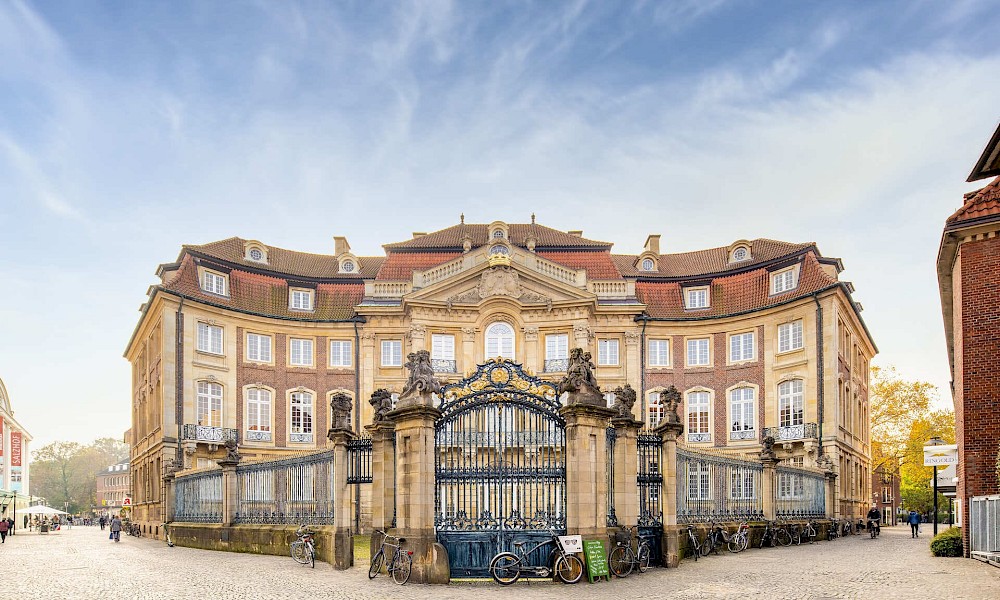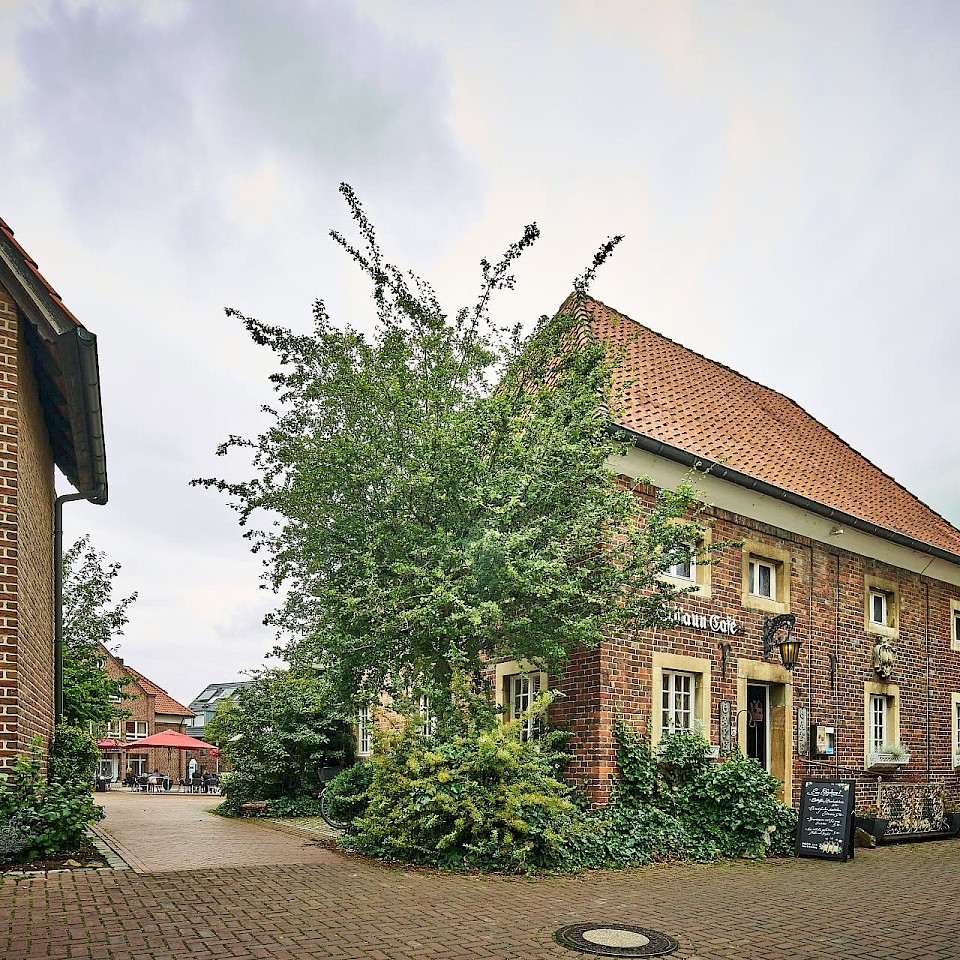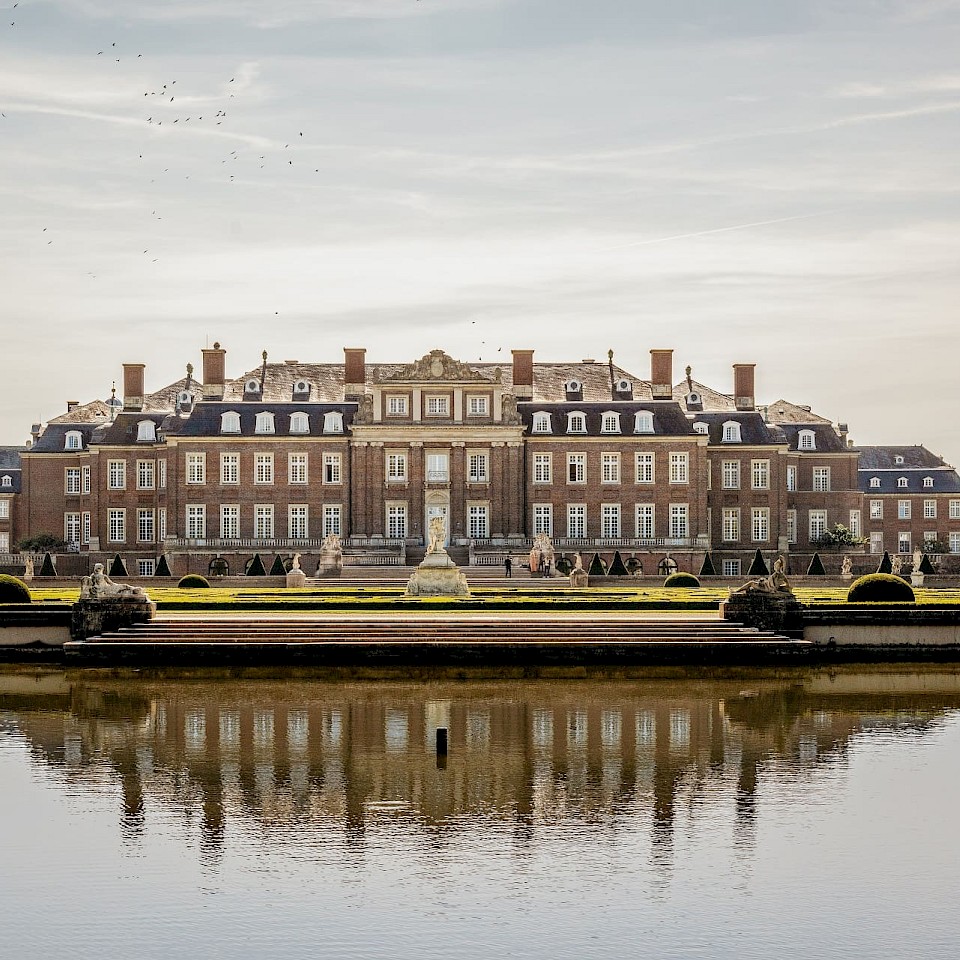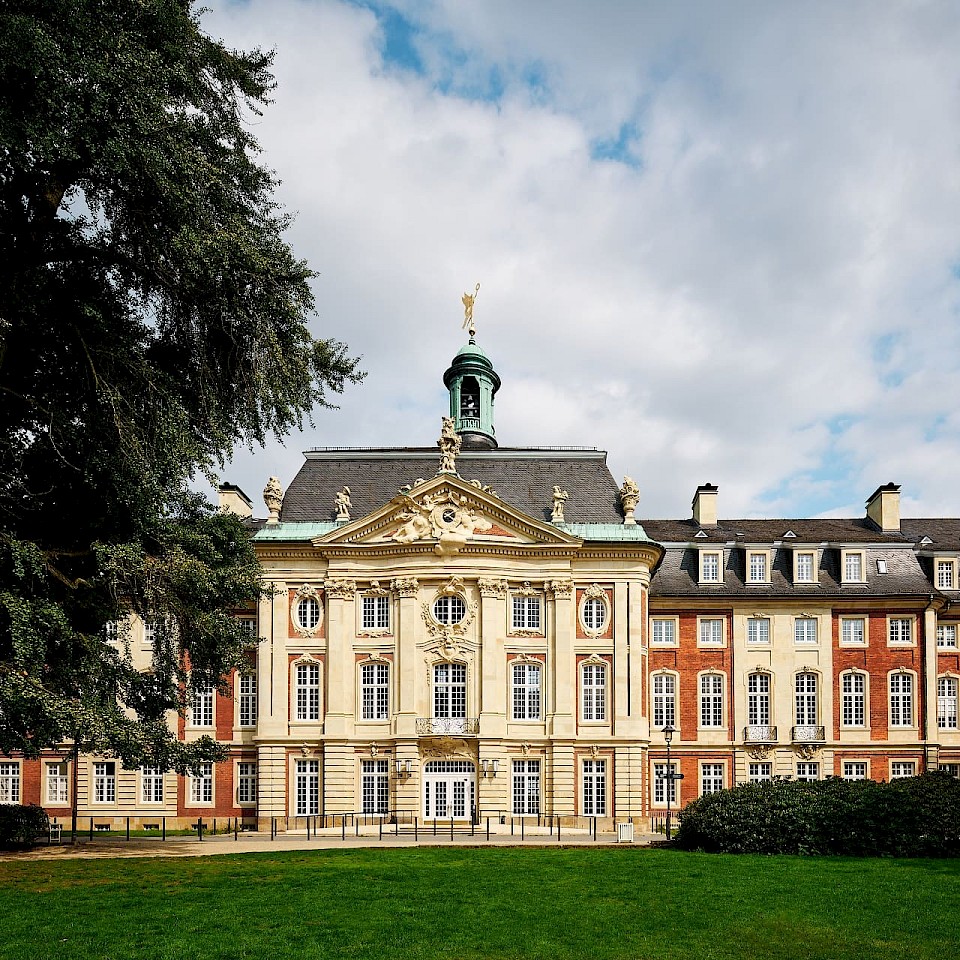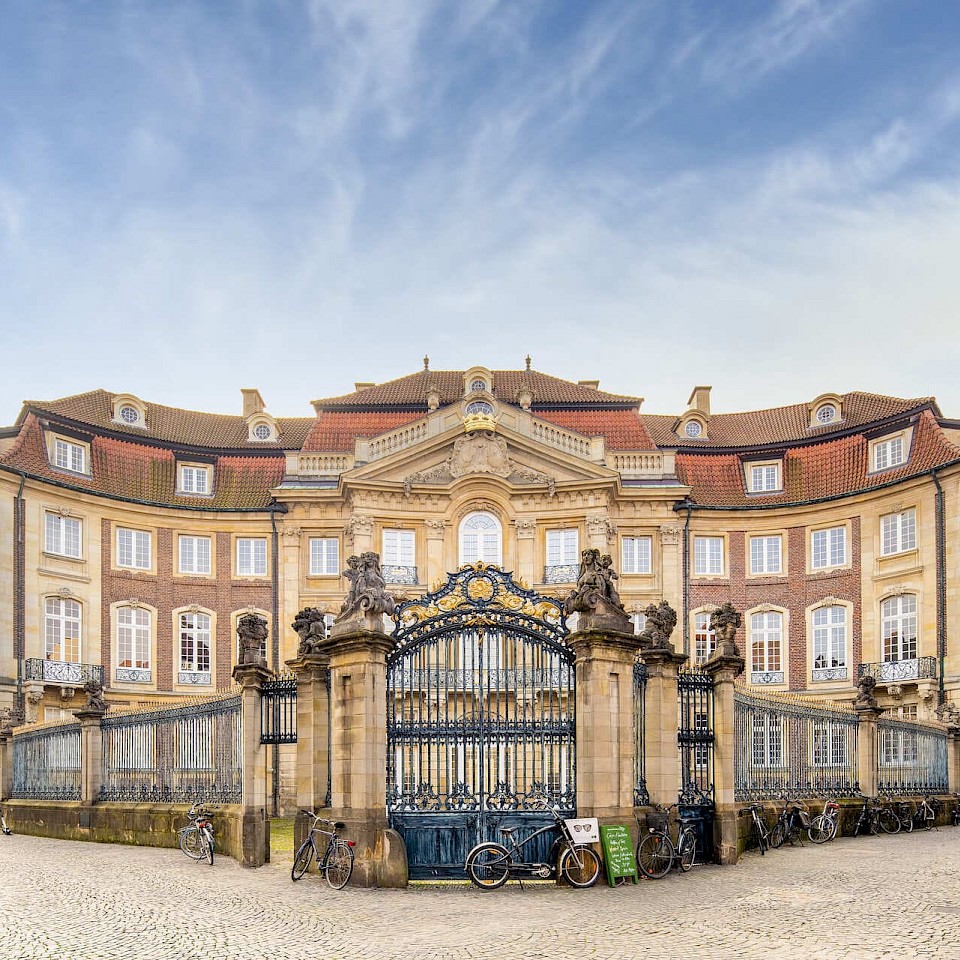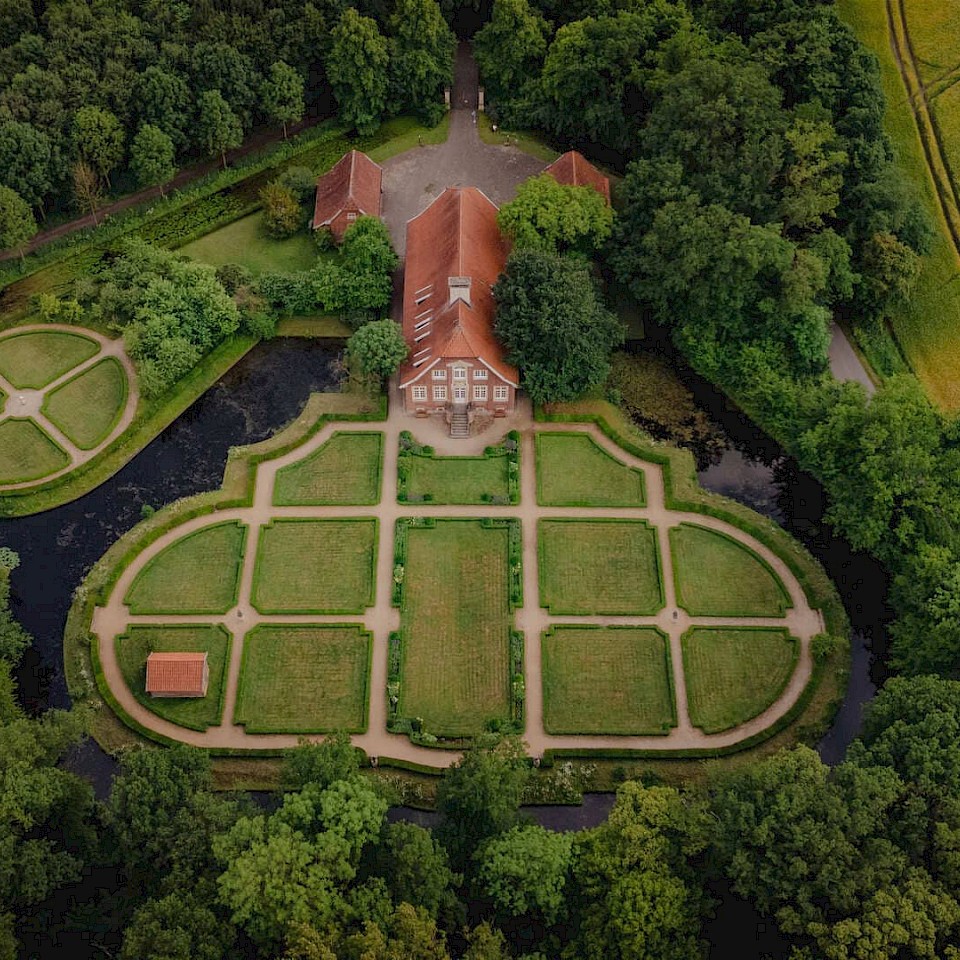
© Christoph Steinweg
In the footsteps of J.C. Schlaun
On the trail of the baroque master builder
The Baroque era was the heyday of numerous aristocratic residences in Münsterland. Fortunately, a large number of different Baroque buildings can still be found today. One man in particular was responsible for many of the buildings: Johann Conrad Schlaun. His works are known far beyond the borders of Münsterland and have left their mark on several cityscapes. These include Münster Castle, Nordkirchen Castle, Haus Rüschhaus and many more. The imposing sizes, the curved shapes and decorative elements - the heart of design fans beats faster. How about a two- or three-day short trip to Münster? Discover below which architectural highlights from Schlaun's pen the city and neighbouring towns have to offer.
Schlaun's treasures in Münster
Schlaun lived in Münster for many years. Accordingly, the university city is full of his magnificent buildings. You can either take a guided tour of the city or go on your own "Schlaun discovery tour". Of course, Münster Castle, built in 1787, should be on your list. Münster's penultimate prince-bishop, Maximilian Friedrich von Königsegg-Rothenfeld, once resided here.
The Erbdrostenhof is one of the city's most important architectural monuments and a true jewel of Baroque architecture. It is a service building of the LWL and today houses an important collection of historical instruments. Not to be forgotten are the Clemens Church and the Lotharing Monastery. Although the Überwasserkirche was not designed by Schlaun, he was buried here.
And should you ever need a break from Schlaun: Stroll around the beautiful Prinzipalmarkt in the Old Town, enjoy a picnic by the Aasee or treat yourself to a delicious meal in one of the many restaurants at the harbour. Münster can do much more than just "baroque".

© Münster Marketing/ Dagmar Schwelle
The castle in Münster was built in 1767 and was the prince-bishop's residence until 1803. Today it is the seat and landmark of the Westphalian Wilhelms University.
Tip: Take the opportunity to take a walk through the castle's botanical garden. Around 8,000 different plant species await you here.

© Münsterland e.V./ Philipp Fölting
Schlaun was buried here in 1773. A memorial plaque is there to remind us of this. Next to St Paul's Cathedral, the Überwasserkirche, also called Liebfrauenkirche, is the oldest church in the city of Münster. Records go back to the year 1040.
Tip: The church regularly hosts events, exhibitions and other art activities. So it's worth taking a look inside.

© Münsterland e.V./ Philipp Fölting
The baroque church of the Lotharing monastery, Schlaun's last work, was later part of a barracks, then living quarters and finally space for the city archives. Today, the Chorfrauenkirche or Lotharing Church is a place to get married.
Tip: Stroll through the tranquil Martini quarter with its small alleys, varied gastronomy and historic buildings.

© Münsterland e.V./ Philipp Fölting
The baroque Erbdrostenhof was built as a noble palace by Schlaun for Münster's Erbdrosten Adolf Heidenreich Freiherr von Droste zu Vischering from 1753 to 1757.
Tip: Together with the Clemens Church and the Dominican Church, it forms the "Baroque Island" on the Salzstraße and is Münster's most beautiful noble residence. Visit the other buildings too!

© Münster Marketing/ Dagmar Schwelle
The somewhat hidden Clemens Church was built for the Brothers of Mercy from 1745 to 1753 according to the plans of Johann Conrad Schlaun.
Tip: You can also visit part of the church from the inside. However, Sundays and public holidays can be an exception.
Schlaun's Westphalian Versailles
In addition to Münster, Schlaun naturally also left his architectural mark in the surrounding area. His masterpieces clearly include Nordkirchen Castle and its park. It is not for nothing that it is known as the "Westphalian Versailles". The construction of this imposing palace in the town of Nordkirchen took several decades. To get the full story about the building, you should definitely book the 1.5-hour guided tour of the estate. After the tour, you can, for example, take a stroll through the castle community.

© Münsterland e.V./Christoph Steinweg
The castle was commissioned by Prince-Bishop Friedrich Christian von Plettenberg. Gottfried Laurenz Pictorius began construction, Johann Conrad Schlaun completed the baroque moated castle after 30 years.
Tip: Visit the Schlaun Café and enjoy delicious coffee and cake here.

© Münsterland e.V./Christoph Steinweg
The palace buildings are surrounded by a palace park of around 172 hectares. An orchard, the orangery, 23 avenues, giant trees and more than 100 sculptures invite you to explore.
Tip: A special attraction of the palace is the reconstructed Venus Island.

© Münsterland e.V./ Philipp Fölting
Originally a sexton's house, today a hotel, restaurant and café in one: the Schlaun Café. It is located only about one kilometre from the castle grounds. Another work by Schlaun.
Tip: The café is supplied by the in-house pastry shop. A coffee with cake or another sweet speciality is an absolute must here.
Other works in the area
Not enough Schlaun yet? During your short trip to Münster, there's even more to see of the master builder. And while you're in the region, you should do the number one activity in Münsterland: Cycling. There are other great houses in Münster's immediate vicinity, for example the charming Haus Rüschhaus in the district of Nienberge. To get there, you can take the 100 castles route. On the leisurely route, you leave the hustle and bustle of the city behind and enjoy the tranquillity of nature.
You have more stamina? Then a trip to the historic centre of Nottuln is also recommended. Schlaun immortalised himself here too and gave the pretty town centre a baroque look. And not only here, but also in Ostbevern you will find the beautiful Schloss Loburg, one of his Baroque works.
Now you have already learned some information about Johann Conrad Schlaun. But there are more exciting facts about the most important baroque architect in Westphalia. He was born in 1695 in Nörde in the former prince-bishopric of Paderborn. After leaving school, Schlaun completed both basic military training and an engineering apprenticeship. After making an impression with his buildings around Paderborn, he joined the Münster army, which offered better career opportunities.
His home, his adopted city of Münster , and other cities in NRW owe him some of their most beautiful buildings. These include hunting lodges, town houses, churches and even entire towns (Nottuln). Schlaun's trademark was the combination of beige sandstone, red brick and white mullioned windows - this architectural style went down in history as the "Westphalian Symphony" .
Tips for your trip
Tips for overnight stays
Stay in style at Wilkinghege Castle at the gates of Münster. Within the historic walls, a wonderful combination of modernity and tradition awaits you. Haus Rüschhaus, one of the most beautiful buildings in Schlaun, is only 3.5 km away from the Schlosshotel.
The renowned Hotel Kaiserhof is located in the middle of the city and only a few metres from Münster's main railway station. For 125 years, the family-run hotel has been spoiling its guests with warm hospitality. From here you can easily reach all the important sights of the city on foot or, typical for Münster, by bike.
Tips on food and drink
The Deckenbrock family has been running the traditional Kleiner Kiepenkerl restaurant for four generations. The half-timbered house near Prinzipalmarkt is not only one of the city's most popular photo motifs, but also the preferred destination for connoisseurs of Westphalian cuisine.
Tips on how to get there
Travelling by train:
Münster can be reached by train from all major cities. Regular ICE and IC connections link Münster with the largest German cities. The bus station and Münster's bicycle station are located directly in front of the station.
Arriving by car
You can reach Münster by car via the A 1 (Cologne-Hamburg) and A 43 (Wuppertal-Münster) motorways. There are several P+R car parks on the outskirts of the city. In the city centre, a parking guidance system will direct you to the various multi-storey car parks and car parks.





